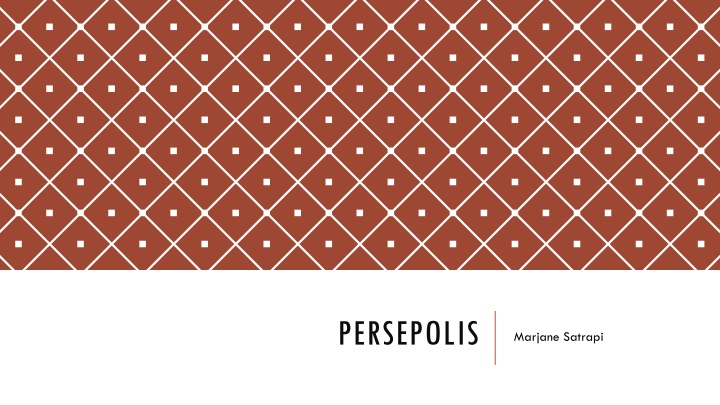
Understanding the Iranian Revolution Through Persepolis
Discover the compelling autobiographical narrative of Marjane Satrapi's childhood in Iran during and after the Iranian revolution, as depicted in "Persepolis." Learn about the historical background of the revolution, the opposition to the Shah, the rise of Ayatollah Khomeini, and the establishment of the Islamic theocracy. Delve into the significance of the veil in Iranian society and the cultural shifts brought about by the revolution. Gain insights into the political, social, and religious complexities that shaped Iran's modern history.
Download Presentation

Please find below an Image/Link to download the presentation.
The content on the website is provided AS IS for your information and personal use only. It may not be sold, licensed, or shared on other websites without obtaining consent from the author. If you encounter any issues during the download, it is possible that the publisher has removed the file from their server.
You are allowed to download the files provided on this website for personal or commercial use, subject to the condition that they are used lawfully. All files are the property of their respective owners.
The content on the website is provided AS IS for your information and personal use only. It may not be sold, licensed, or shared on other websites without obtaining consent from the author.
E N D
Presentation Transcript
PERSEPOLIS Marjane Satrapi
BACKGROUND The story is an autobiographical account of Satrapi s childhood in Iran during and after the Iranian revolution. It was originally published in French Persepolis literally means City of Persians It was the capitol city of the Achaemenid Empire in 550-330 BC Also known as the First Persian Empire The city is in Iran
THE IRANIAN REVOLUTION (1978-1979) Based around the overthrow of Mohamed Reza (U.S backed) Eventually replaced by Ayatollah Khomeini Became an Islamic Republic Iranians started thinking that Iran was becoming Western or Secular The Shah s regime became too oppressive, corrupt, and extravagant. People thought that the Shah was a non-Muslim puppet for western powers (U.S., Great Britain). There was an Islamic revival that opposed Westernization
OPPOSITION TO THE SHAH Rise of Ayatollah Khomeini Created propaganda against the Shah saying that he was trying to destroy Islam Khomeini preached that revolt, and especially martyrdom, against injustice and tyranny was part of Shia Islam, and that Muslims should reject the influence of both liberal capitalism and communism Freedom Movement of Iran Secular Middle-Class Supported the Iranian Constitution of 1906 Marxist Groups Tudeh Communist Party of Iran Supported Nationalization of Iran s Oil
THE ISLAMIC THEOCRACY AND THE VEIL According to the psychologists, people who use improper outfits or disgusting make-up are suffering from character disorders 100 Years Of Beauty: Iran

